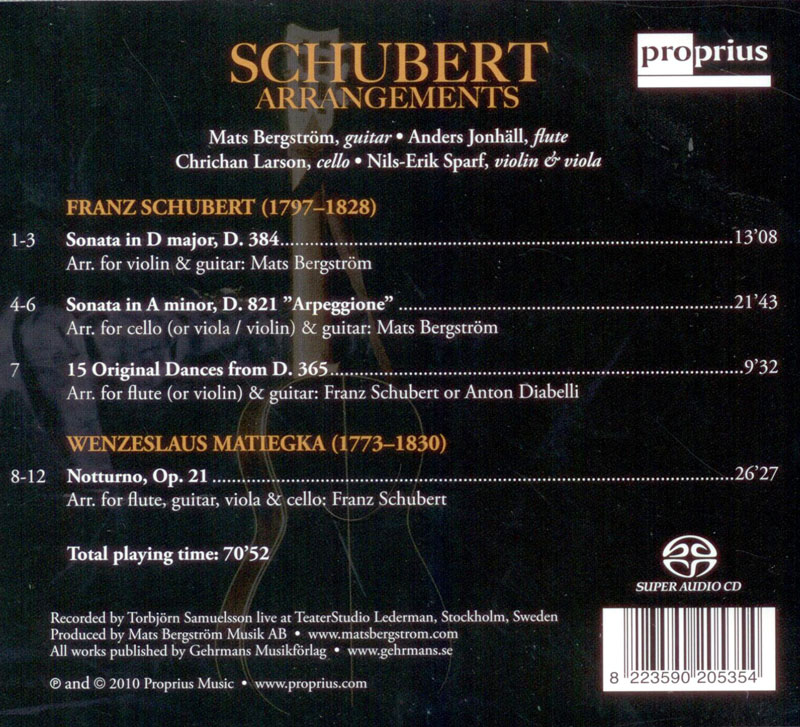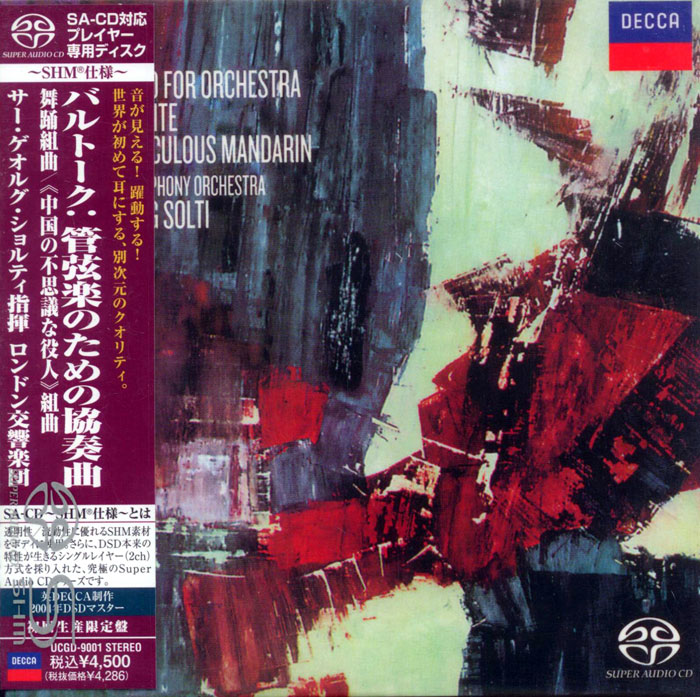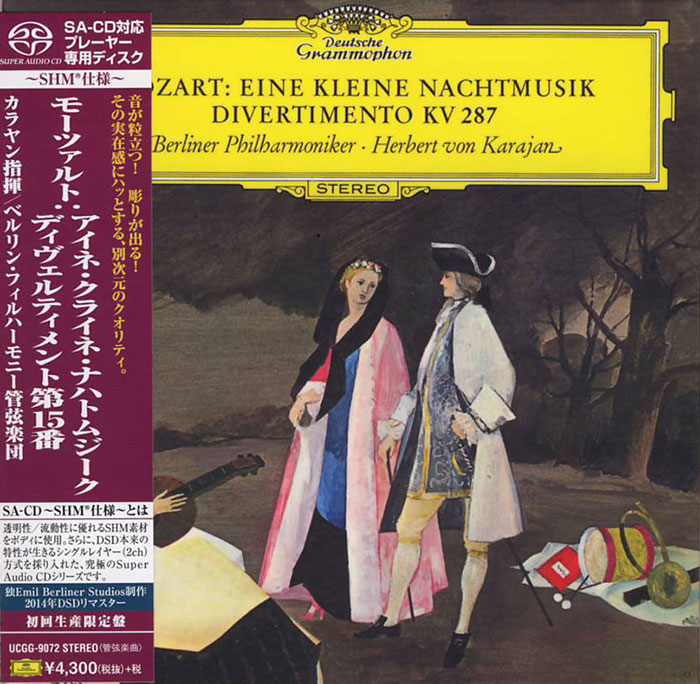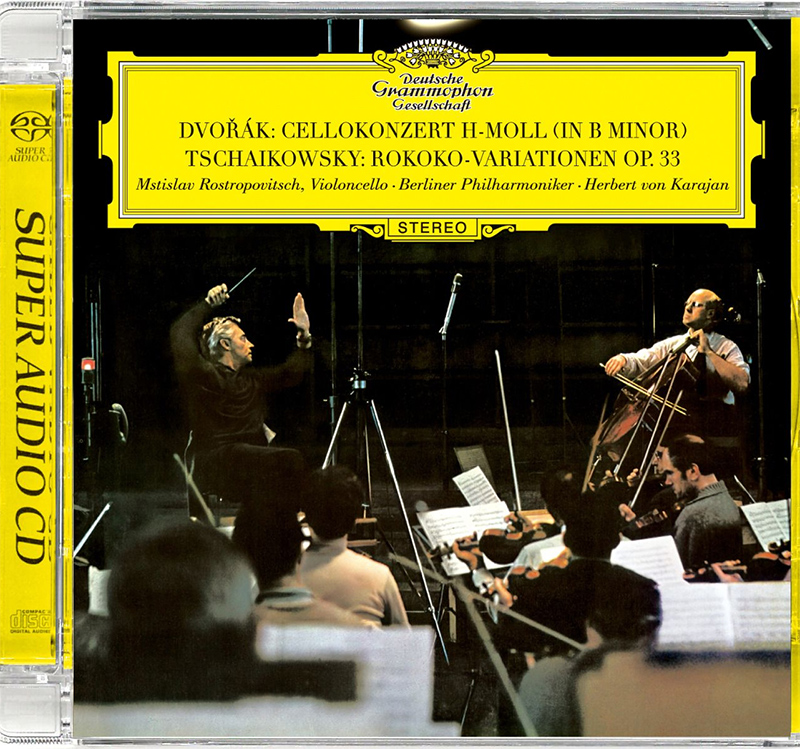Logowanie
Mikołaj - ten to ma gest!
Elton John, The Mamas & The Papas, Cat Stevens, Rod Stewart, Bobbie Gentry, Stevie Wonder, Engelbert Humperdinck
Memory Lane
Edycja Numerowana - 1000 egzemplarzy w skali światowej
RACHMANINOV, Eiji Oue, Minnesota Orchestra
Symphonic Dances / Vocalise
Best Recordings of 2001!!! NAJCZĘŚCIEJ KUPOWANA PŁYTA Z RR!
Karnawał czas zacząć!
Music of Love - Hi-Fi Latin Rhythms
Samba : Music of Celebration
AUDIOPHILE 24BIT RECORDING AND MASTERING
CHOPIN, LISZT, DEBUSSY, DVORAK, Gerhard Oppitz
Dances romantiques - A fantastic Notturno
Wzorcowa jakość audiofilska z Clearaudio
Winylowy niezbędnik
ClearAudio
Double Matrix Professional - Sonic
najbardziej inteligentna i skuteczna pralka do płyt winylowych wszelkiego typu - całkowicie automatyczna
SCHUBERT, MATIEGKA, Mats Bergstrom
Schubert Arrangements
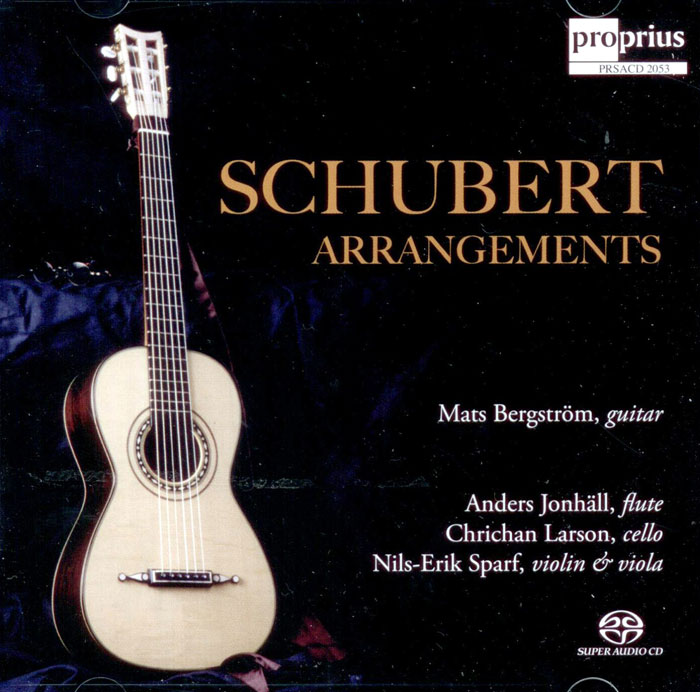
- Mats Bergstrom - guitar
- SCHUBERT
- MATIEGKA
We guitarists like to think of Franz Schubert as an esteemed colleague. Even though he wrote such a small amount of music for our instrument, he actually owned two guitars: one made by Staufer (whom I shall return to) and one by Enzensberger. To what extent he actually played them we do not know. Let me first of all give an account of what Schubert did write for the guitar; a relatively brief labour. There are three manuscripts: Terzetto, D 80 "Zur Namesfeier meines Vaters" for three male voices and guitar, Quartetto, D 96 for flute, violin, viola and 'cello (actually an arrangement of Wenzeslaus Matiegka's Notturno, Op.21) and an early version of Das Dörfchen, D 598a. Works with guitar that do not exist in manuscript but appear in early, printed editions are a further five multi-part Lieder for male voices and piano or guitar (a second version of Das Dörfchen, D 598, Die Nachtigall, D 724 and Geist der Liebe, D 747 from Opus 11 as well as Naturgenuss, D 422 and Frühlingsgesang, D 740 from Opus 16), Die Nacht, WoO for solo voice and guitar and the fifteen waltzes from D 365 in Original Tänze for flute or violin and guitar. That is all! Yet we have become accustomed to hearing works by Schubert performed on the guitar. I have myself had the pleasure of performing the song cycle Die schöne Müllerin on numerous occasions in a well-received version for baritone and guitar. Two further works that lend themselves very well for guitar transcription are the two sonatas included on this disc, that in D major for violin and piano and that in A minor for arpeggione and piano. The latter has long been popular among guitarists keen on chamber music, while the former work is a more recent addition to the guitar repertoire. The manuscript of Schubert's Sonata in D Major, D 384 is dated "März 1816" and bears the title Sonate pour Pianoforte et Violons [sic]. In 1836 Diabelli & Co. published this and two more sonatas as Opus 137 with the title Drei Sonatinen für Piano-Forte und Violine. My arrangement for violin and guitar was made after both Schubert's manuscript and Diabelli's printed edition. (It is not sure, or even probable, that the latter is actually based on the former version. Musicologists believe that yet another manuscript existed. Indeed a fragment of a second manuscript has been found, consisting of the last six bars of the third movement.) Both versions have identical passages but differ from each other in several sections of varying length. The current arrangement has previously been recorded by Gil Shaham and Göran Söllscher (DG) as well as by Joakim Svenheden and me (BIS), in both cases on modern instruments; if one can call a Stradivarius "modern". Arpeggione, guitare d'amour and guitar-violoncello are all names for a musical instrument that was constructed in 1823 by the Viennese guitar-maker Johann Georg Staufer, the very man who had built one of Schubert's two guitars. This new invention was positioned between the knees of the performer like a viola da gamba and was played with a bow though it had the body shape of a guitar, the same number of strings and the same tuning. The only extant composition for it is Franz Schubert's Sonata in A Minor, D 821 dated "Nov. 1824". The arpeggione never caught on as an instrument and was soon forgotten, though Schubert's sonata has remained a popular work in the repertoire of cellists, violists and others. Many guitarists have regarded the arpeggione sonata - particularly its piano part, which is remarkably "guitar-like" in character - as an excellent way of approaching Schubert's music. The work is here performed in a version for cello and guitar with Chrichan Larson playing a five-stringed cello. The waltzes in Original Tänze for flute or violin and guitar are also to be found in Sechsunddreißig Originaltänze, Opus 9 for piano ("Erste Walzer"). At first sight they may seem simple and unduly modest. Harmonically and technically they are certainly not demanding. But they offer instead a veritable ocean of possibilities in matters of phrasing, articulation, agogics and dynamics. They can be performed just as squarely or as sophisticatedly as one desires. (Anders Jonhäll and I believe that we have progressed some way towards the latter possibility.) The full title of the work is Original Tänze für Flöte oder Violine und Guitarre, componirt von Franz Schubert. Thus, the version for flute or violin and guitar could well be the composer's own even though it seems more probable that it was the work of the publisher, Anton Diabelli, a guitarist himself. There are very few indications of dynamics and suchlike. The piano version provides a little more information to which I have given due regard in my edition of the work. The sixth of the fifteen waltzes has its own title: Trauer Walzer. When a quartet for flute, guitar, viola and cello in the hand of Franz Schubert was found in an attic in the Austrian town of Zell-am-See in 1918, many people were naturally excited even though there were aspects of the discovery that were perplexing. In the manuscript dated "26 Februar 814" the title "Terzetto" had been crossed out and replaced with "Quartetto". And there were other references to a mysterious, printed trio version of the work, which was immediately assumed to be by Schubert, too. It was not until 1931 that somebody demonstrated that Schubert's quartet was, in point of fact, an arrangement of Wenzeslaus (Wenzel) Matiegka's Notturno, Opus 21 for flute, viola and guitar. This work, published in 1807 by Artara in Vienna, has five movements: Tempo moderato, Menuetto, Lento e patetico, Zingara and seven variations on Friedrich Fleischmann's song "Mädchen, o schlummre noch nicht!". Schubert had evidently come upon this edition and reworked it for domestic use. Besides adding a cello part and making some adjustments to the parts for flute and guitar, he had radically revised the viola part. He also exchanged the second trio in the minuet movement with one that he composed himself and inserted a variation for the cello in the final movement. The manuscript ends abruptly after four variations, the second one being Schubert's, and three bars of a fifth variation. Whether Schubert stopped at this point or whether he actually arranged the rest of Matiegka's Notturno is impossible to say with any certainty. Other modern-day editors have made attempts to arrange the three missing variations in Schubert's fashion. I have myself been content merely to finish the fifth variation. Furthermore my collaborators and I have opted to place this variation before the fourth. In this way the four instruments are highlighted one by one before they assume equal status in the night-like, suggestive variation, which rounds off the entire work. The present recording was made with an audience of subscription members of Kammaren at the TeaterStudio Lederman - an independent centre for the arts in Stockholm - on two beautiful spring nights in 2008. The four works presented show Franz Schubert in some of his most joyful guises. If one is seeking greater depths of emotion one must look to other works in his - in every way - enormous śuvre. (Mats Bergström) Muzycy: Mats Bergström, guitar; Nils-Erik Sparf, violin; Anders Jonhäll, flute; Chrichan Larson, cello.





























